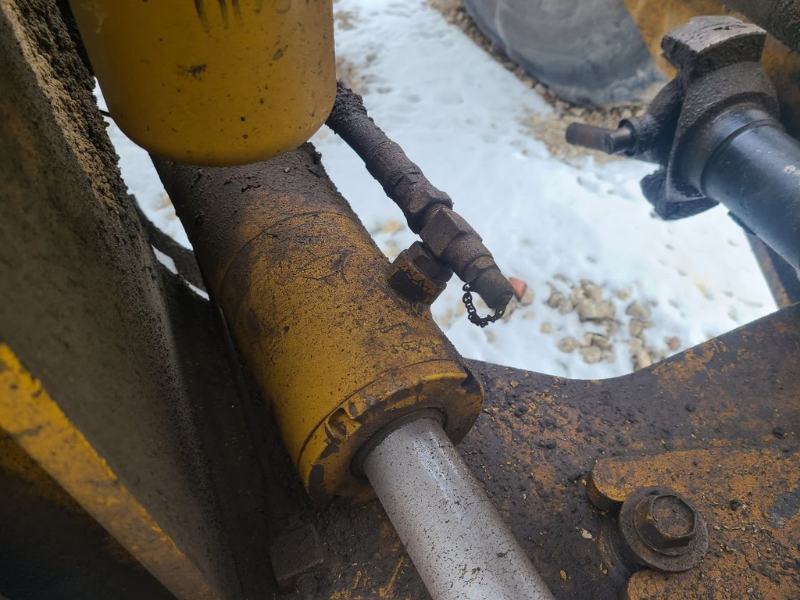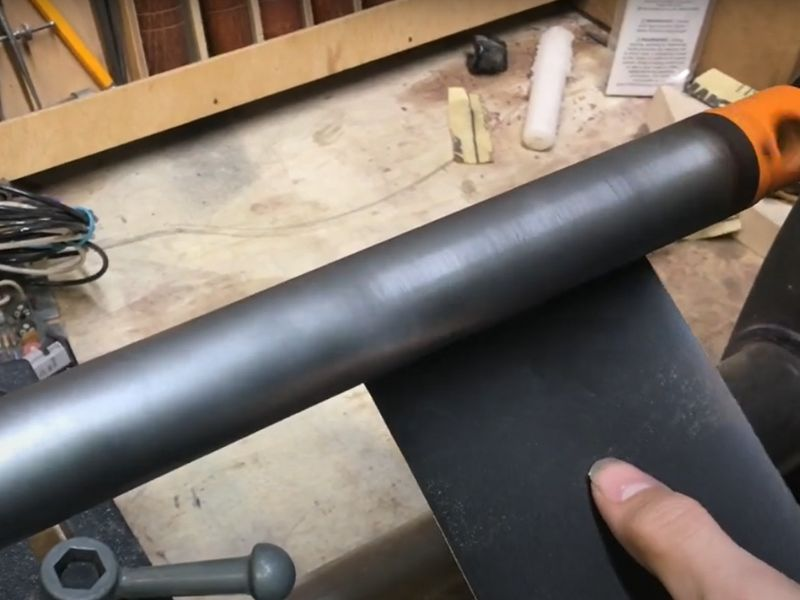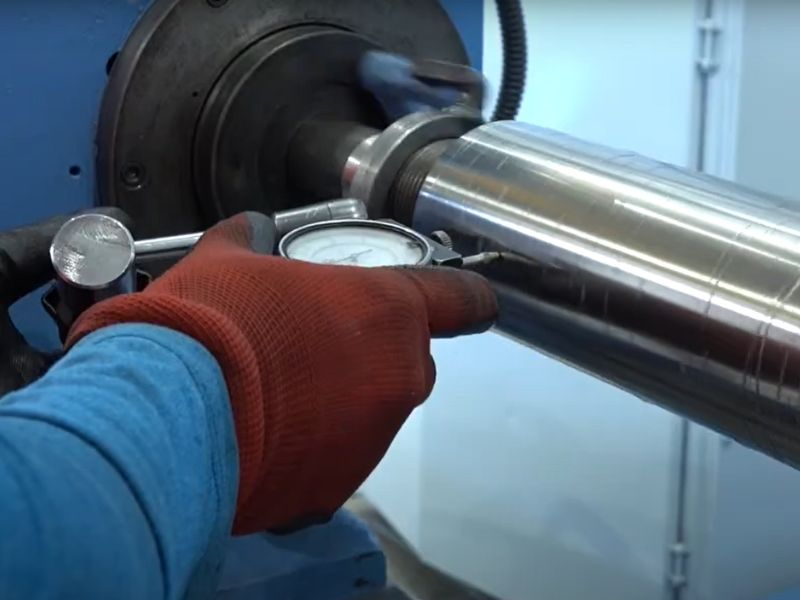Similar to other vital components, hydraulic cylinders are inherently prone to degradation over time. Among the myriad issues they encounter, pitting poses a particularly intricate challenge. Pitting refers to a mode of surface deterioration marked by minuscule, often microscopically sized cavities or corrosion spots that can significantly impair the functionality and lifespan of hydraulic cylinders. Grasping the effective techniques for restoring pitted hydraulic cylinders is not merely a maintenance concern; it is fundamental to ensuring the reliability and endurance of your machinery. This comprehensive guide is tailored to serve as your supreme reference for comprehending the causative factors, diagnosing, and implementing remedies for pitted hydraulic cylinders, thereby safeguarding your equipment's optimal performance.
Pitting within hydraulic cylinders denotes the emergence of minuscule, frequently sub-microscopic, cavities or indentations on the cylinder's metallic surface. This issue generally stems from the corrosive effects of the hydraulic fluid or mechanical abrasion, triggering a gradual deterioration of the metal. The presence of pitting can undermine the seamless operation of the hydraulic system, since these surface irregularities may disturb the seal between the cylinder and its piston, facilitating leaks and reducing overall efficiency.

1.Contamination of Hydraulic Fluid: The ingress of water or other corrosive materials into the hydraulic fluid markedly hastens corrosion within hydraulic cylinders. Water induces rust and corrosion, whereas corrosive agents can chemically interact with the cylinder’s material, initiating pits. Safeguarding the hydraulic fluid’s purity and freedom from impurities is vital for averting such deterioration.
2.Abrasive Particle Impact: The presence of abrasive particulates—like dirt or metal shavings—in the hydraulic fluid can engender mechanical erosion of the cylinder’s internal surfaces. Circulation of these particles can strip away protective coatings and inflict direct harm to the metal substrate, resulting in pitting. Periodic filtration and surveillance of fluid cleanliness are critical measures to lessen this hazard.
3.Lack of Adequate Maintenance: Overlooking regular maintenance routines can deteriorate the cylinder surface’s protective layers, amplifying its susceptibility to corrosive attacks and pitting. Timely inspections and maintenance interventions guarantee the timely rectification of nascent problems before extensive damage ensues.
4.Pressure Variability: Hydraulic cylinders are engineered to endure specified pressure thresholds. Nonetheless, deviations surpassing these limits impose stress on the cylinder material, provoking micro-fractures that progress into pitting. Implementing precise system tuning and refraining from operational extremities serve to alleviate this pitting inducer.
Visible markings or depressions on the cylinder's surface are clear indicators of pitting. These surface irregularities are often discernible through tactile examination with a fingertip or noticeable upon close visual scrutiny. Conducting routine visual inspections aids in detecting these preliminary symptoms of wear and corrosion.

Leakage of hydraulic fluid frequently signifies a faulty seal, a condition that may arise from pitting within the cylinder walls or on the piston rod. This not only diminishes the system's operational efficiency but also poses environmental and safety risks. Vigilant monitoring for leaks facilitates prompt detection and remediation efforts.
A conspicuous decline in the hydraulic system's performance or efficiency could signify pitting-induced damage. This may be evident through slower operational speeds, diminished force generation, or challenges in attaining full actuation. Implementing performance tests can aid in diagnosing such problems.
Unusual noises, such as scraping or grinding sounds during cylinder operation, can be caused by the piston moving over an uneven, pitted surface. These sounds are often a sign that the cylinder requires inspection and possibly repair.
1.Surface Treatment: In the case of minor pitting, the application of a metal filler or epoxy directly onto the pits, followed by sanding the area to a smooth finish, effectively restores the cylinder's surface integrity. This approach is appropriate for limited damage scenarios where the overall structural integrity remains uncompromised.
2.Protective Coatings: Post-repair of the pitted region, the application of a corrosion-resistant coating serves to shield the surface from subsequent pitting incidents. This measure is vital for enhancing the durability of the repair and halting further corrosive degradation.

1.Re-chroming: In instances of profound pitting, the procedure of re-chroming becomes necessary. This entails recoating the cylinder rod with a fresh layer of chrome, thereby reinstating its smoothness and defense against additional pitting. Given the specialized skillset and equipment this process entails, it is advisable to entrust it to professionals.
2.Sleeving: For cylinders plagued with extensively damaged barrels, sleeving provides a remedy by implanting a fresh sleeve within the barrel, effectively generating a pristine, even surface. Precise machining and fitting are integral to this procedure, rendering it fitting for execution by expert repair services.

1.Significance: Conducting routine inspections is vital for promptly identifying emerging wear or damage.
2.Procedure: Pay particular attention to the repaired sections and other wearing-prone critical areas, employing both visual and tactile examination methods. Interval: Establish the frequency of inspections according to the cylinder's usage intensity and the specific operating environment.
1.Objective: Consistent cleaning inhibits the accumulation of detrimental debris and impurities. Methodology: Utilize suitable cleaning solutions and practices that do not impair the cylinder's material integrity or its protective coatings.
2.Schedule: Integrate cleaning routines into the standard maintenance calendar to uphold continuous safeguarding against wear.
1.Objective: The use of protective coatings acts as a barrier against corrosive substances, substantially diminishing the likelihood of pitting damage.
2.Execution: Choose coatings specifically formulated for hydraulic cylinders and apply them following the manufacturer's guidelines to ensure maximum defense.
1.Importance: Clean hydraulic fluid is pivotal in reducing internal wear and averting pitting from inside the system.
2.Procedure: Schedule regular hydraulic fluid changes, employ filters to eliminate contaminants, and consistently check fluid quality to guarantee it stays within specified standards.
1.Implementation Strategy: Establish a thorough regimen for periodically assessing hydraulic fluid condition and cylinder health.
2.Elements: This regimen should incorporate checks for fluid levels, contamination evaluations, and surveillance for leaks or other damages.
3.Frequency Adjustment: Tailor the inspection frequency according to the operational workload and the system's environmental exposure.
1.Technology Utilization: Leverage tools such as vibration analysis, ultrasonic testing, and particle counters to assess the hydraulic system's health.
2.Advantages: These technologies facilitate early detection of wear or impending failures, enabling proactive maintenance and repairs.
3.Integration: Integrate these diagnostic tools into the standard maintenance protocol for ongoing surveillance and prompt interventions.
Tackling pitting in hydraulic cylinders is vital for sustaining the efficiency, reliability, and extended service life of hydraulic systems. This exhaustive guide emphasizes the significance of early identification, efficacious repair tactics, and meticulous post-repair upkeep to avert future complications. Upholding hydraulic cylinders in prime condition via scheduled maintenance and protective measures guarantees their sustained performance and curtails the probability of costly interruptions. Prioritizing the wellbeing of your hydraulic systems through these methodologies is fundamental for optimizing their functional lifespan and underpinning their trustworthiness across diverse applications.